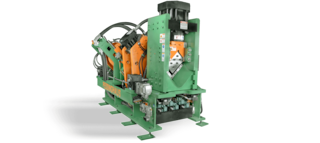Let's explore structural steel equipment
- Stephanie McDowell
- Feb 4
- 1 min read
and the evolution of structural steel

1. Early Beginnings of structural steel
The use of iron in construction dates back to ancient civilizations. However, the evolution of structural steel began in the 19th century with the arrival of the Industrial Revolution, which brought about advancements in metallurgy and manufacturing processes.
2. Development of Steel Production
In the early 1800s, the Bessemer process was developed, allowing for the mass production of steel. This innovation significantly reduced the cost of steel and improved its quality, making it a viable material for construction.
3. Rise of Steel Structures
By the late 19th century, structural steel became widely used in buildings and bridges. Iconic structures such as the Eiffel Tower (1889) and the first skyscrapers, such as the Home Insurance Building in Chicago (1885), showcased the potential of steel in architecture.
4. Advancements in Design and Engineering
The 20th century saw further advancements in structural design and engineering. The introduction of computer-aided design (CAD) and finite element analysis (FEA) allowed for more complex and efficient steel structures.
5. Modern Innovations
Today, structural steel continues to evolve with the incorporation of high-strength steel alloys, sustainability practices, and advanced fabrication techniques. Innovations such as modular construction and smart materials are shaping the future of structural steel in construction.
6. Conclusion
The evolution of structural steel has transformed the construction industry, enabling the creation of taller, stronger, and more resilient structures. As technology continues to advance, the role of structural steel will likely expand further, contributing to sustainable and innovative building practices.
Below are a few examples of the structural steel equipment ACC Machinery Co., Inc. sells.



















Comments